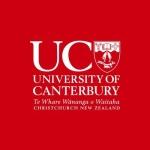Human footprint has potential to pose risk to frozen continent
A University of Canterbury (UC) lecturer is concerned about the potential increase of high-risk tourism activities in the Antarctic and a lack of regulation to address their impacts.
Daniela Liggett is a social scientist researching the regulation of tourism to the Antarctic. Today, she offered her thoughts on critical issues related to Antarctic tourism development, some of which will also be discussed during the Icefest in Christchurch which ends next month.
She was also concerned that large, not ice-strengthened ships might run into problems in Antarctic waters.
``Serious accidents could be caused by collisions with ice or rocks in poorly charted Antarctic waters, and there is insufficient capacity to rescue crew and passengers from a large ship carrying more than 500 or even 1000 tourists if that vessel had any incident or accident,'' Dr Liggett said.
The numbers of tourists to the Antarctic grew dramatically over the last few decades, and as visitor numbers increase, so does the probability of a disastrous accident. Fewer than 500 tourists visited the Antarctic annually in the mid-1960s, when commercial tourism became firmly established.
Visitor numbers to the frozen frontier peaked in 2007-08 with 46,265 people heading to the Antarctic on tourist trips. Last season saw only 26,519 visitors, largely due to the global economic crisis and a recently issued ban on the use of heavy fuel oil in the Antarctic Treaty area, making cruise tourism to the Antarctic more expensive for operators.
Dr Liggett said tourism would continue but it was important to ensure that it was run in a conscientious, safe and environmentally sound manner. But any human activity in the Antarctic had the potential of disturbing wildlife, Dr Liggett said.
``Flights over penguin colonies or handling of penguins increase their anxiety and heart rate as research has shown. Viewing them from a safe distance has less of an impact and a visitor code of conduct mandates a distance of 5 m to be kept from penguins. However, we must not forget the indirect impacts, such as climate change, our activities have on the habitat of penguins and other wildlife.
``Other environmental impacts from Antarctic tourism include e.g. pollution. Some residual hydraulic fluid might escape from ships' propellers and engine shafts. Accidental littering can occur when, due to strong winds, plastic bags and pieces of clothing are blown away. Noise and air pollution are also impacts to be taken into consideration. Antarctic tourism has a significant carbon footprint that is often forgotten when we discuss the effects Antarctic tourism has on the environment.''
``The responsibility to regulate and manage Antarctic tourism cannot be completely left to the operators, especially since the International Association of Antarctica Tour Operators (IAATO) does not have any sanctioning power over those operating outside this industry association.
``Policy makers will have to continue working with tour operators to develop practical, sensible and strategic regulatory processes to address upcoming challenges and to safeguard the Antarctic environment.''
However, the lack of consistency with which tourism was regulated, with which the regulation was enforced and with which enforcement and, more generally, behaviour in the Antarctic was monitored, was a concern, she said.
Despite the challenges associated with Antarctic tourism operations and regulation, it had benefits that cannot be ignored. Tourism could generate greater awareness about Antarctica and could encourage visitors to make contributions to environmental and conservationist causes, she said.
Tour operators occasionally provide free passage to Antarctica for scientists or take along equipment. There is the potential for tourists and tour operators to assume the role of a watchdog, monitoring the activities of scientists and other visitors to the Antarctic.
